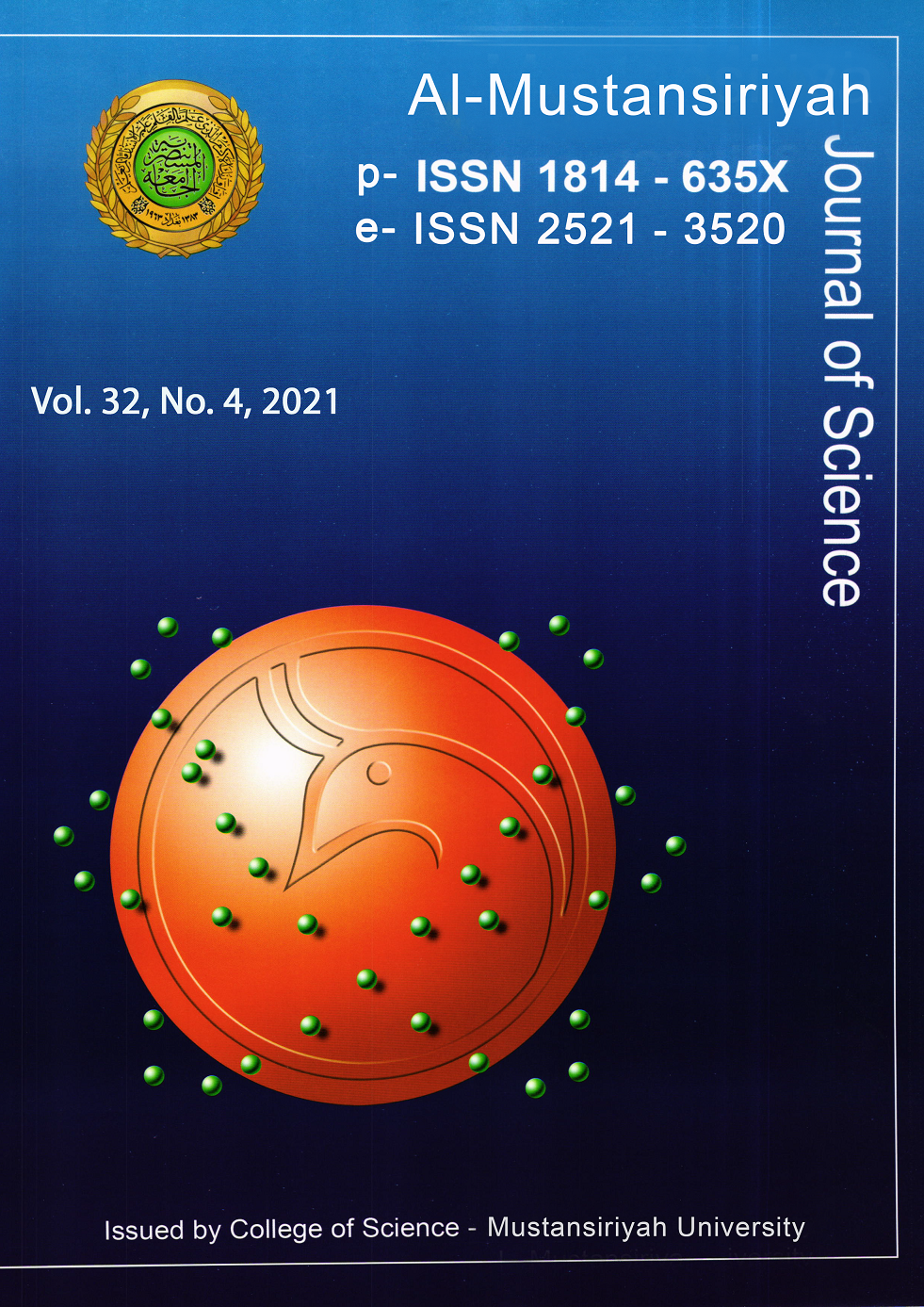Effect of Climate Change on Spring Massive Sand/Dust Storms in Iraq
DOI:
https://doi.org/10.23851/mjs.v32i4.1105Keywords:
Dust Storm, Dust Surface Concentration, NMMB/BSC-Dust, Surface conditions.Abstract
Sand and Dust storms are considered a major natural disaster that cause many damages to society and environment in Iraq and surrounded deserted regions. Two spring sand/dust storms on May in two different years were synoptically analyzed. These sand/dust storms were compared in terms of dust surface concentration from NMMB/BSC-Dust model, sea level pressure, surface wind vector, satellite vegetation index and stations rainfall. The findings of this sand/dust storms comparison indicate that Iraq in spring may be affected by two types of wind one dust storm initiated by Shamal which have long occurred in this region and caused frequent dust storms in spring and second by Al-Khamsian. Dust storm in 2012 is massive than sand/dust storm in 2018 where the highest dust surface concentration is reached to (7700 μg/m3) in 22 May 2012 and about (3100 μg/m3) in 11 May 2018. Increase in vegetation cover over Iraq in 2018 was about 23% more than in 2012. Rainfall level in season (2017-2018) was higher than in rainfall season (2011-2012) in Iraqi dust sources regions. Low pressure gradient, less strong wind, rise in rainfall level and enhancement in vegetation cover are contributed to decrease the storm concentration of 2018 roughly by half.
Downloads
References
Albarakat, R., & Lakshmi, V. (2019). Monitoring Dust Storms in Iraq Using Satellite Data. Sensors, 19(17), 3687.
Albarakat, R., Lakshmi, V., & Tucker, C. J. (2018). Using Satellite Remote Sensing to Study the Impact of Climate and Anthropogenic Changes in the Mesopotamian Marshlands, Iraq. Remote Sensing, 10(10), 1524.
Chen, P.-Y., Fedosejevs, G., Tiscareno-Lopez, M., & Arnold, J. G. (2006). Assessment of MODIS-EVI, MODIS-NDVI and VEGETATION-NDVI composite data using agricultural measurements: An example at corn fields in western Mexico. Environmental monitoring and assessment, 119(1-3), 69-82.
Cuevas, E. (2013). Establishing a WMO Sand and Dust Storm Warning Advisory and Assessment System Regional Node for West Asia: Current Capabilities and Needs (WMO-No. 1121). Retrieved from Switzerland:
Hamel, S., Garel, M., Festa-Bianchet, M., Gaillard, J.-M., & Côté, S. D. (2009). Spring Normalized Difference Vegetation Index (NDVI) predicts annual variation in timing of peak faecal crude protein in mountain ungulates. Journal of Applied Ecology, 46(3), 582-589. doi:10.1111/j.1365-2664.2009.01643.x
Hamidi, M., Kavianpour, M. R., & Shao, Y. (2013). Synoptic analysis of dust storms in the Middle East. Asia-Pacific Journal of Atmospheric Sciences, 49(3), 279-286.
Jackson, R. D., & Huete, A. R. (1991). Interpreting vegetation indices. Preventive veterinary medicine, 11(3-4), 185-200.
Kim, D., Chin, M., Remer, L. A., Diehl, T., Bian, H., Yu, H., . . . Stockwell, W. R. (2017). Role of surface wind and vegetation cover in multi-decadal variations of dust emission in the Sahara and Sahel. Atmospheric Environment, 148, 282-296.
Pérez, C., Haustein, K., Janjic, Z., Jorba, O., Huneeus, N., Baldasano, J. M., ... & Perlwitz, J. P. (2011). Atmospheric dust modeling from meso to global scales with the online NMMB/BSC-Dust model - Part 1: Model description, annual simulations and evaluation. Atmospheric Chemistry and Physics, 11, 13001-13027. doi:10.5194/acp-11-13001-2011
Pettorelli, N., Ryan, S., Mueller, T., Bunnefeld, N., Jedrzejewska, B., Lima, M., & Kausrud, K. (2011). The Normalized Difference Vegetation Index (NDVI): unforeseen successes in animal ecology. Climate research, 46(1), 15-27. doi:10.3354/cr00936
Shao, Y. (2008). Physics and modelling of wind erosion (Vol. 37): Springer Science & Business Media.
Shepherd, G., Terradellas, E., Baklanov, A., Kang, U., Sprigg, W., Nickovic, S., . . . Benedetti, A. (2016). Global assessment of sand and dust storms.
Silleos, N. G., Alexandridis, T. K., Gitas, I. Z., & Perakis, K. (2006). Vegetation indices: advances made in biomass estimation and vegetation monitoring in the last 30 years. Geocarto International, 21(4), 21-28.
Sissakian, V., Al-Ansari, N., & Knutsson, S. (2013). Sand and dust storm events in Iraq. Journal of Natural Science, 5(10), 1084-1094.
Terradellas, E., Basart, S., & Cuevas, E. (2016). Airborne dust: From R&D to Operational forecast. AEMET, Madrid, NIPO: 281-16-007-3; WMO, Geneva, WMO. Retrieved from
Tomasz Borowik, N. P., Leif Sönnichsen, Bogumiła Jędrzejewska. (2013). Normalized difference vegetation index (NDVI) as a predictor of forage availability for ungulates in forest and field habitats. Eur J Wildl Res, 59, 675-682. doi:10.1007/s10344-013-0720-0
UNEP, W., UNCCD. (2016). Global Assessment of Sand and Dust Storms. Retrieved from Nairobi.
Zavisa Janjic, T. J., Ratko Vasic. (2011). A Class of Conservative Fourth-Order Advection Schemes and Impact of Enhanced Formal Accuracy on Extended-Range Forecasts. Monthly Weather Review, 139, 1556-1568. doi:10.1175/2010MWR3448.1.
Downloads
Key Dates
Received
Accepted
Published
Issue
Section
License
Copyright (c) 2021 Al-Mustansiriyah Journal of Science

This work is licensed under a Creative Commons Attribution 4.0 International License.
(Starting May 5, 2024) Authors retain copyright and grant the journal right of first publication with the work simultaneously licensed under a Creative Commons Attribution (CC-BY) 4.0 License that allows others to share the work with an acknowledgement of the work’s authorship and initial publication in this journal.






















